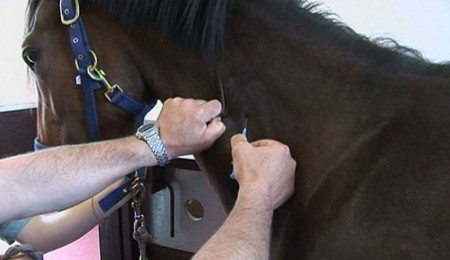Horses are vaccinated against a variety of diseases, including tetanus, equine influenza and rabies, depending on the country where you reside. Tetanus is usually fatal and is caused by bacteria spores in the soil and environment entering the horse’s system via a wound. Equine influenza is a highly infectious virus that spreads rapidly from horse to horse in epidemic proportions. Rabies is a viral disease and is fatal by the time symptoms appear.
The process of vaccinating introduces a foreign substance into the horse’s body that stimulates its immunity. The actual act of injecting the horse normally passes without incident, but occasionally it can cause a reaction in itself-horses can suffer from listlessness, mild discomfort, swelling at the injection site or, in extreme cases, can become quite ill and depressed over a number of days. To avoid such side-effects the horse must not be worked hard or made to sweat for at least four days after the vaccination. Any stressful situations, such as traveling or moving to a new yard, should also be avoided at this time. Evidence of side-effects such as sweating or listlessness should be reported to the vet immediately.
Although no vaccine is 100 percent effective, if a disease is contracted, the reaction should be either prevented or reduced so that the horse recovers quickly. Horses that contract a disease should be kept isolated until they are fully recovered from the symptoms, even after vaccination, as they could still carry and pass on the infection.
Each horse you own should have its own passport or certificate that contains details of its markings, age, name and date of birth. The passport also contains a record of the horse’s vaccination history, which must be verified and signed off by a veterinary surgeon each time a horse is vaccinated.
Competitors are required to produce a passport to gain entry to equestrian events where evidence of current vaccinations is needed by the sport’s ruling body. The passport must be kept with the horse all its life and should be passed on to a new owner if the animal is sold.
